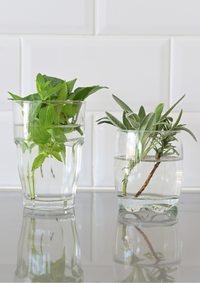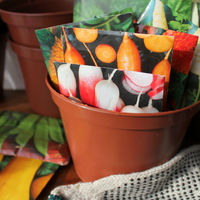Plant propagation is how you make new plants. LiveLighter® explores how vegetables can be grown from seed or pre-started seedlings and others can be grown from cuttings.
Growing from seed
Growing from seed has plenty of advantages:
- Greater selection: seed companies offer a staggering array of varieties, with seeds available from garden centres, online, seed-saver networks, friends and neighbours, or saving your own seeds. You can even pick up seeds at the supermarket!
- Some vegies grow better from seed : notably carrots, peas and corn
- Seeds are generally much cheaper than seedlings
- Some seeds can be started under cover to get a head start to the season.
Note: If you are looking to save your own seeds, check out resources online first. Some seeds do not grow “true-to-type”. This means that the “child” plant won’t look like the “parent” plant. This is due to cross-breeding or grafting – apples are a good example. Some commercial varieties are covered by plant breeders’ rights that don’t allow seed saving.
To propagate your own seeds to grow seedlings, you can purchase commercial propagation kits from your local garden centre, but you can also use things like egg or milk cartons, folded newspapers or papier–mâché. These can simply be dug straight into the ground once the seedlings have grown.
Buying seedlings
Buying seedlings is another way to get started:
- Represents an instant garden: it’s a great way of getting plants straight in to the ground, and getting a kick-start on the growing season
- Seedlings are often sold in smaller numbers, usually punnets of 6 or 8 plants. This is too few carrots, too many zucchinis and just the right number of cabbages for one planting. You might want to share with a friend!
- Although this is changing slowly, seedlings often come in plastic punnets (with plastic tags) which require disposal, and
- Seedlings are almost always more expensive than seed.

Cuttings
Starting from a cutting, also known as vegetative propagation, is essentially “cloning” an existing plant:
- It is often the best way to grow many perennial plants. Herbs such as rosemary and thyme are easily grown from cuttings, and perennials like asparagus, Jerusalem artichokes, lemon grass and ginger are generally grown from division of clumps or rhizomes/tubers.
- It’s the only way to grow certain plants that have been bred to be seedless or infertile – for example, the modern Cavendish (“Grand Nain”) banana plants are reproduced by cuttings
- Because cuttings essentially regrow the parent plant, it produces plants of known quality
- Cuttings are a fantastic way to get started with plants you like – they’re a great project for kids as well. Try taking a runner from a sweet potato or a leaf from a succulent (Aloe Vera, for example), and placing in clean soil or immersing the end in water to let it grow a new plant.

Reproduced with permission from LiveLighter®. LiveLighter® State of Western Australia 2022.
